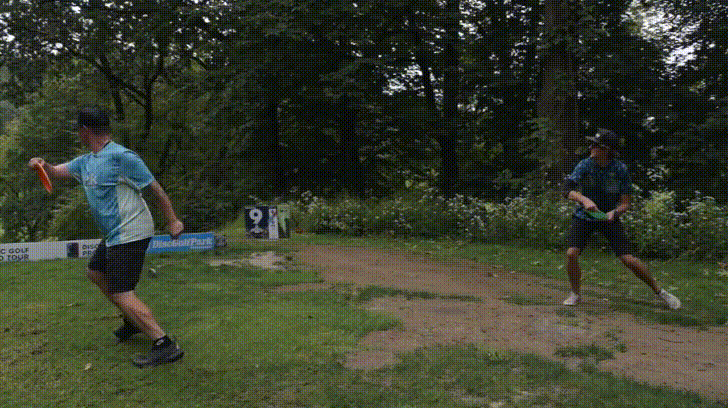I'll bet Eagle could throw like GG. But not the other way around.
This could actually be a fun learn-by-speculation-and-debate thread. I can't throw so I'll vent my energy by stirring it up!
Observations:
GG:
- Is taking advantage of his mass being more centered in his thiccc body around his core. So that vertical hop+drop with gravity is especially useful for his body type.
- Accordingly, his form emphases the increase in momentum he gets like a ballerina
revolving around the more vertical axis when he plants.
- This form also helps him get the most out of his
good but not absolute top-tier levers.
- He's got a very late leverage boost on the disc due to his posture & arm mechanics, especially
with the late pronation at the wrist. Very large angle at the shoulder entering the hit.
Eagle:
- Has longer levers (I think in the relative and absolute sense).
- Stretching out horizontally helps him maximize the move against the doorframe lagging in that dimension. His form also takes advantage of his very long legs leveraging him into the plant. Notice how long his feet are too. Wow.
- Incredible mobility/flexibility within and between his upper and lower body (GG's
got plenty too, but Eagle always reminds me of Gumby. I mean
holy ****).
Speculating/questions:
- I'd think GG would probably not get nearly as much out of a very horizontal form like Eagle's. He lacks the levers and would lose the boost he gets from his beefy mass dropping into the plant more vertically.
-I suspect Eagle might be able to pull off a vertical form
like young Simon (or could have if he started working on it young).
-However, Eagle still might get more out of his horizontal form than a vertical form for power due to his extreme leverage advantages moving in that direction (?). Perhaps even more than Simon (who has said Eagle throws at least 50' farther than him head-to-head) (?)
-Eagle's flexibility possibly allows him to get even more lag/separation from the lower to upper body than GG moving horizontally, which might be another reason GG's form invests in the vertical component (?).
-There are a lot of other differences between these two guys. Lever sequences, joint anatomy, etc all looks different to me when looking closely. Eagle even uses that weird "suitcase" grip that you rarely see elsewhere - just form, or also anatomy?
These are some of the things that I suspect contribute to the "art" that SW is referring to.
